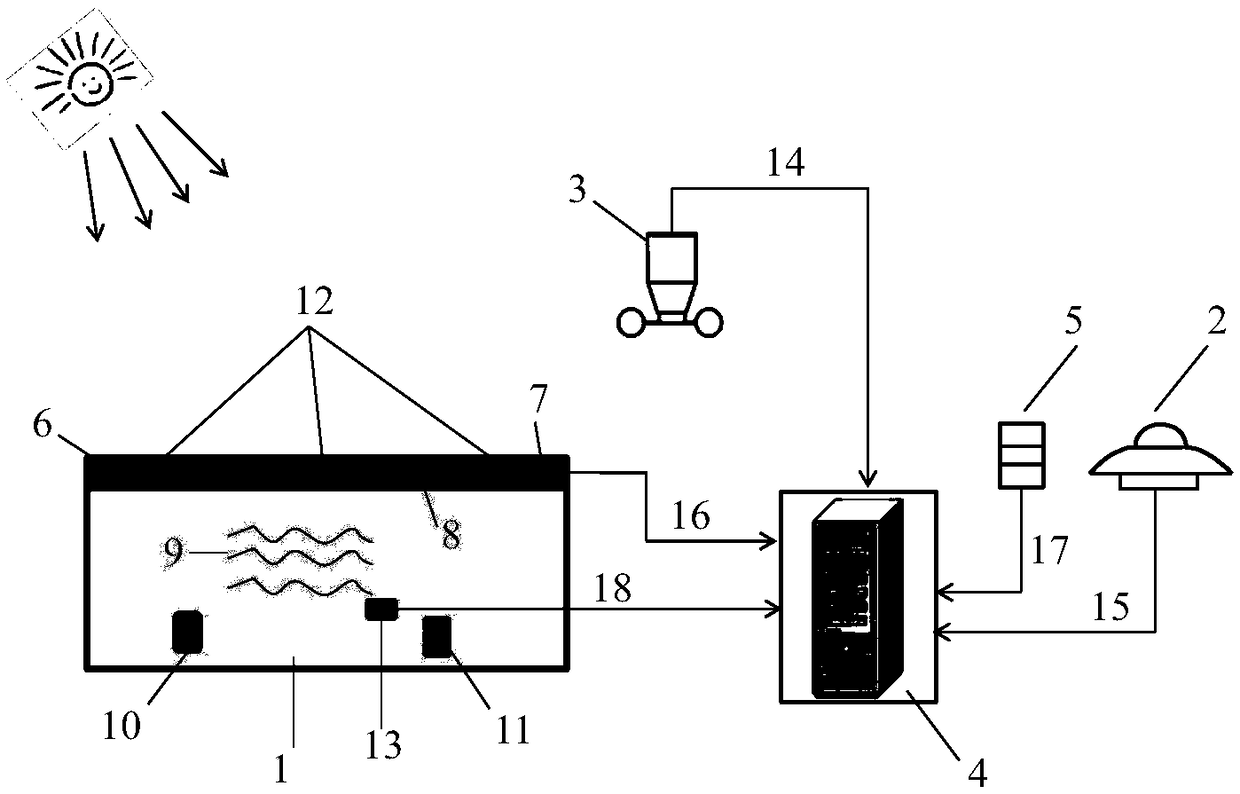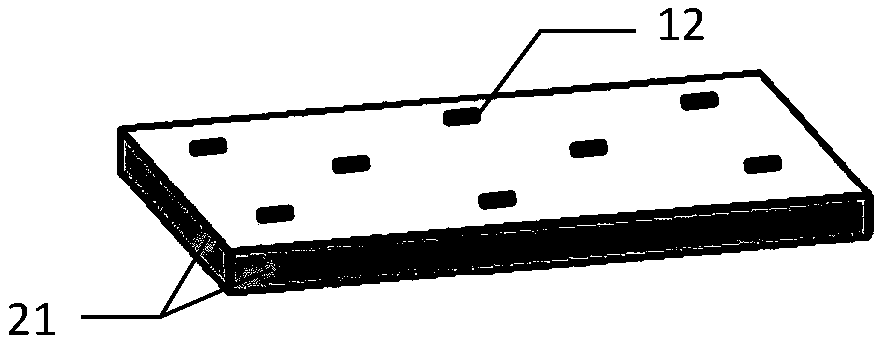System and method for measuring comprehensive radiation absorption coefficient of surface of building material
A technology of building materials and radiation absorption, applied in the field of building materials, can solve the problems of difficult accurate calculation of external climate and environmental parameters, difficulty in ensuring reliability and universality, and difficult to eliminate, so as to avoid size effect, good repeatability, The effect of low test cost
- Summary
- Abstract
- Description
- Claims
- Application Information
AI Technical Summary
Problems solved by technology
Method used
Image
Examples
Embodiment
[0062] like figure 1 Shown is a structural diagram of a material radiation absorption coefficient testing system, which specifically includes: thermal insulation box (1), solar radiation sensor (2), anemometer (3), small automatic weather station (4) , air temperature sensor (5), building material test piece (6), thermocouple temperature sensor (12) and water temperature sensor (13);
[0063] The building material test piece (6) is horizontally placed on the top of the thermal insulation box (1), and forms a closed box with the thermal insulation box, and a water temperature sensor (13) is arranged in the thermal insulation box for measuring the temperature of the thermal insulation box. The temperature (18) of water in the hot box; a plurality of thermocouple temperature sensors (12) are arranged on the surface of the building material test piece for measuring the temperature of the building material test piece (16); an air temperature sensor (5) is set in the test environmen...
PUM
 Login to View More
Login to View More Abstract
Description
Claims
Application Information
 Login to View More
Login to View More - R&D
- Intellectual Property
- Life Sciences
- Materials
- Tech Scout
- Unparalleled Data Quality
- Higher Quality Content
- 60% Fewer Hallucinations
Browse by: Latest US Patents, China's latest patents, Technical Efficacy Thesaurus, Application Domain, Technology Topic, Popular Technical Reports.
© 2025 PatSnap. All rights reserved.Legal|Privacy policy|Modern Slavery Act Transparency Statement|Sitemap|About US| Contact US: help@patsnap.com



